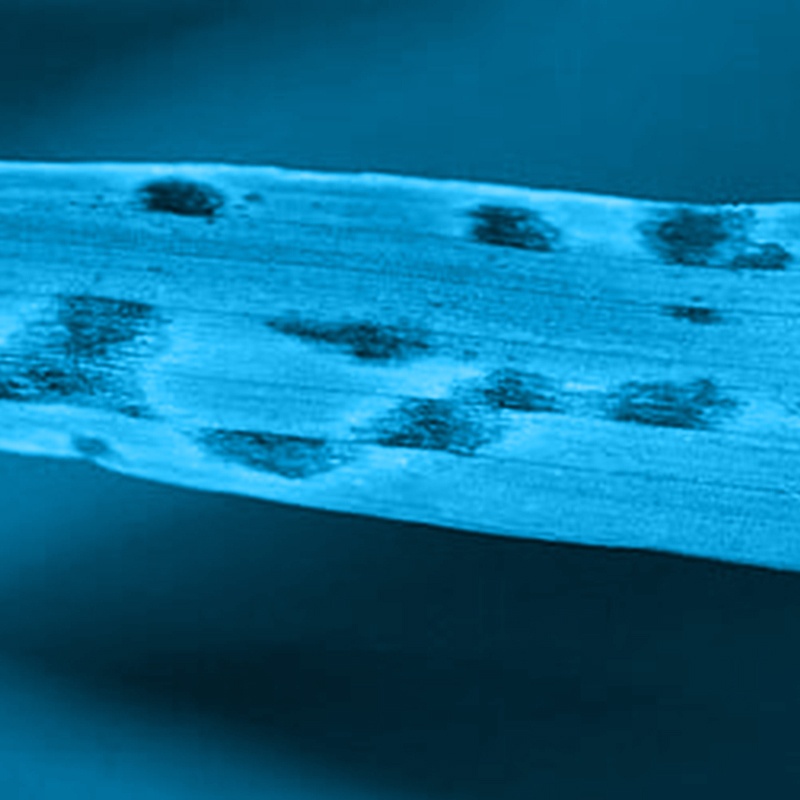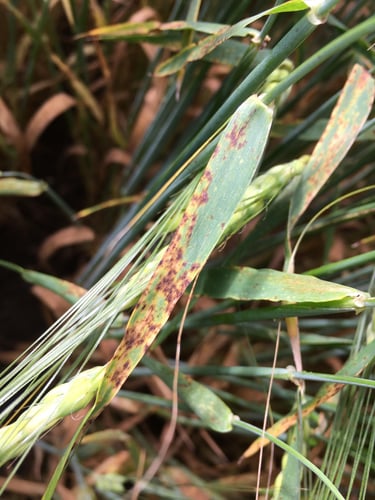2018 - Ramularia control in barley: use a multi-site at T2 to maximise protection

One of the key criteria which can exacerbate the spread of ramularia in barley is leaf wetness around GS30 – something which UK winter barley crops have seen plenty of because of the wet, late start to the spring. Another key factor for expression of ramularia symptoms is light levels. Sunlight triggers the fungus to produce a phytotoxin which causes lesions to express, which is why ramularia is often seen on the top leaves and awns. Penetration of sunlight further into the canopy can cause expression of symptoms earlier on lower leaves providing increased secondary infection opportunity for the disease. Both winter and spring crops may be suffering reduced tiller numbers this year and thinner crops that allow more light penetration may be more at risk to earlier expression of symptoms and subsequently more at risk to severe levels of ramularia later in the season if conducive conditions persist. Growers should therefore think about including a multi-site fungicide at T2 to ensure their crops are adequately protected.
 Ramularia in barley
Ramularia in barley
The inclusion of a multi-site is even more fundamental given the fact that ramularia has displayed increased insensitivity to azole and SDHI chemistries, and confirmed resistance to strobilurins.
Ramularia leaf spot can cause extensive damage to the upper leaves of spring and winter barley once crops have finished flowering, resulting in reduced crop quality and yield reductions, with the AHDB citing yield losses of up to 0.6 tonnes per hectare in spring barley.
UK growers therefore need to be aware that, due to disease mutations, the effectiveness of SDHIs, azoles and strobilurins at controlling ramularia is severely impacted. This leaves multi-site chemistries such as chlorothalonil and folpet as vital additions to T2 applied mixture to maintain effective control of the disease.
UK populations of the disease have already shown insensitivity and reduced susceptibility to prothioconazole and SDHI chemistries, and we have also seen confirmed widespread resistance (G143A mutation) to strobilurins, with this now starting to impact on field performance with reports of poor control from previously robust programmes at locations throughout the UK in 2017.
Unlike other modes of action, multi-site fungicides are not affected by resistance and, as such, remain effective against air-borne ramularia. Using multi-site products is therefore vital to providing effective protection.
Growers and agronomists are therefore urged to include a multi-site, such as folpet, at the critical T2 timing.
Folpet is available as Arizona (500g/l folpet), and has been shown to reduce ramularia levels, particularly when used in mixture at the T2 timing. Folpet also reduces the pressure on single site active ingredients, many of which are under threat from the re-regulation process, by reducing the pace at which resistance to these chemistries develops.
 United Kingdom
United Kingdom Select country
Select country




